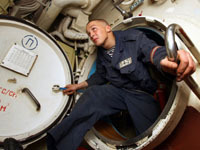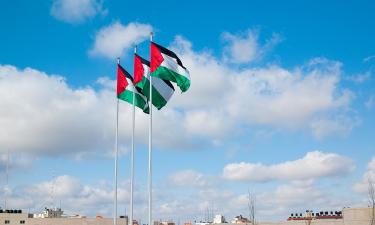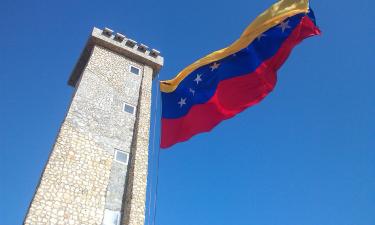The last accident of Soviet nuclear fleet
 This accident was the latest in the nuclear submarine fleet of the USSR and took place immediately after the coup, exactly 20 years ago. Nearly all the years since the accident there was not public information about it. Even the almighty Internet has no specific details. "Pravda.ru" tried to reconstruct the events with a member of the Supreme Council who Ruslan Khasbulatov ordered to investigate the accident.
This accident was the latest in the nuclear submarine fleet of the USSR and took place immediately after the coup, exactly 20 years ago. Nearly all the years since the accident there was not public information about it. Even the almighty Internet has no specific details. "Pravda.ru" tried to reconstruct the events with a member of the Supreme Council who Ruslan Khasbulatov ordered to investigate the accident.
"On September 27, 1991, during a training launch in the White Sea at the" TK-17 ""Arkhangelsk," a training missile exploded and burned in the silo. The blast took off the silo roof, and the missile was thrown into the sea. During the incident the crew was not injured. The boat had to undergo a small repair ... " this is the only phrase that pops up in all the search engines when trying to find more information about the accident.
"TK-17" is the fifth of the six heavy nuclear-powered submarines of Project 941 "Typhoon" produced in the Soviet Union (this project is also called "Shark"). These are the largest submarines in the world. The author of these lines a few years ago happened to hear about that accident firsthand. Rear Admiral Vitaly Fedorin, who at the time of the accident was at a supporting vessel, said:
"I saw everything that happened from outside. During a prelaunch a ballistic missile exploded. The cover of the silo flew to an unknown destination, and the rubber coating of the outer hull of the boat was burning. The commander of the" Shark," Captain of the 1st Rank Grishko, acted professionally. He promptly countersunk the giant submarine to a periscope depth, knocked down the flames and flushed away the remaining solid rocket fuel that can burn in the water from the boat. Fortunately, none of the sailors were injured.
Later the silo was welded and has never been used, but the boat has long remained in battle formation. It was the only accident with missiles on ships on such a project. It did not cause any damage to durable and lightweight housing, and there were no casualties. The submariners paid tribute to the designers - Severodvinsk Shipyard Sevmash - for the safety features they designed for the ship."
That accident had no adverse environmental, economic or any other consequences. According to a member of the Supreme Council of the RSFSR Albert Butorin who now resides in Severodvinsk, Arkhangelsk region, a real catastrophe was prevented by the dedication of the nuclear submarine commander:
"In 199-1993, Arkhangelsk region was the area of my responsibility as a member of the Supreme Council of Russia. On October 1, 1991 I was summoned by the chairman of the Supreme Council Ruslan Khasbulatov: "I have been told that in the White Sea an explosion of a submarine with nuclear weapons on board was miraculously prevented. Now the boat is stationed in Severodvinsk, where deputy commander of the Northern Fleet Vice-Admiral Poroshin has arrived. You need to analyze the situation together and report to me urgently. Please go there immediately!"
Heavy nuclear submarine "TK-17" was built in Severodvinsk at Sevmash and handed to the Navy on December 15, 1987. Its main armament was 20 intercontinental ballistic solid propellant missiles. In Severodvinsk the nuclear submarine damage was surrounded by such secrecy that even the then Mayor Lyskov was not allowed on board. Together with Poroshin we walked through all sections of "TK-17", chatted with the crew and their physician Pugachev, inspected the damage to the upper deck, covered by melted missiles.
The commander of the "TK-17" Captain of First Rank Igor Grishkov was completely exhausted in those days. He reported that on September 27, 1991 at the site in the White Sea, when a training missile was launched there was an explosion in the silo whose cover flew far out to the sea. The boat surfaced, and when he saw a fireball over the deck, Grishkov shot down the flame by dipping into a mass of sea water, and then surfaced again. This maneuver saved an underwater nuclear-powered ship from a nuclear weapon explosion with hellish consequences.
Then I offered Grishkov's candidacy for the title of a Hero of the Soviet Union, but the country's leadership and the Navy chose to hush up the accident in order to ensure the secrecy surrounding the terrible consequences of a possible catastrophe. Back in Moscow, I reported everything to Khasbulatov and persuaded him not to raise the debate about this state of emergency at a session of the Supreme Council, because it could have led to a massive scandal, radio-phobia, capture of the security forces of the USSR by Yeltsin, the proclamation of the Russian North "a nuclear-free zone," shutdown of the nuclear test site on Novaya Zemlya and the main facilities in Severodvinsk, and the removal of a number of senior officers of the Navy from office, including the leaders of the USSR Ministry of Atomic Energy.
The case was limited by a promise of a Navy Commander Vladimir Chernavin that henceforth no ballistic missiles will be launched from the White Sea. The commander of "TK-17" Grishkov who saved the submarine from death and all the White Sea from an environmental disaster has never received the title of a Hero due to certain national interests and political considerations. However, his act was indeed heroic."
In fact, this was not the last incident with the explosion of missiles experienced by an atomic submarine "Archangelsk." In February of 2004, under the program of large-scale trainings the Northern Fleet submarine "Novomoskovsk" ("K-407") was to launch an intercontinental ballistic missile. The launch has failed. The missile has crashed, and exploded after the release from the missile silo.
Not far from the "Novomoskovsk" on board the nuclear submarine "Archangel" there was then-Russian President Vladimir Putin who observed the exercises. He personally saw the failed launch. The Navy failed to brag a successful launch for the President to see, but the world's press displayed the famous photograph of Vladimir Putin in a black submarine hat taken on board "Archangelsk."
A few weeks later, on April 29, 2004, due to lack of ammunition submarine TK-17 "Arkhangelsk" was put in reserve. Currently the ship is waiting for a decision regarding either disposal or modernization under project 941U. It sits in the naval port of Severodvinsk, rusting and coming into disrepair. Yet, this is another story.
Andrei Mikhailov
Pravda.Ru
Subscribe to Pravda.Ru Telegram channel, Facebook, RSS!




